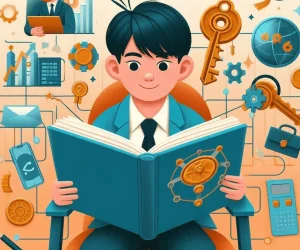Thirteen-year old Alec Marvin sits with an iPad in a classroom, his teacher Sandra Doherty is sitting beside him. She holds up a laminated picture of a $50 bill and asks Alec to identify it. Alec looks at his iPad, touches a slab titled “money identification” and then presses “$50”. “Fifty,” the gadget blurbs out.
Alec is among a growing number of children in the US with autism spectrum disorder. These children are increasingly using what’s known as autism education apps on electronic devices like the iPad and smartphone. And among all the autism apps being used, “What’s the Expression” and “Make Sentences” are the two most used.
Just a few years back, Alec would have used a bulky assistive communication device, costing between $7,000 to $9,500. That is, if these devices used any form of communication at all. Autistic kids and special needs children, for long, have used the so-called assistive technology devices. These included audio books for the visually challenged, to special transmitters for those hearing impaired. The autism education apps are more targeted towards blended learning. The “What’s the Expression” and “Make Sentences” apps combine the blessings of technology with the more traditional methods of instruction. It’s less jarring to the autistic kids than their conventional education peers.
There are many different autism apps that can help a child. These apps, more interestingly, are all customizable. This means that these apps can be tailor-made to suit each individual child. All over the world, autism education apps are helping the children because it’s usually much easier to read.
Some experts have cautioned against indiscriminate use of autism apps. This is because research on the effectiveness of educational technology for autistic children is still scant.
But educators, therapists, counselors and teachers using the autism apps, vouch that special needs children respond particularly well to the education apps because the programs respond in predictable and consistent ways. Unlike the earlier technologies, smart phones and tablets are much more portable and indistinguishable from the devices used by neuro-typical students.
Developer teams are continuously trying to come up with new apps that can better help children with autism. Apps like “What’s the Expression” and “Make Sentences” have really shown the way. Researchers are now trying to introduce intelligent robots that’ll further help autistic kids in their education. Hopes are already running high, banking on the success of “What’s the Expression” and “Make Sentences” apps.






More Stories
How Special Needs Advocates Empower Families
Why Special Needs Preschools Are Essential for Growth
Top Special Education Resources to Enhance Instruction